Last year we visited the Pantanal in Brazil – one of our favourite wildlife photography destinations. We returned with some fantastic images and couldn’t wait to revisit this unique wetland paradise. Earlier in the year we set off on a follow-up trip, visiting three new locations that provided opportunities to photograph a wide range of species.
The Pantanal is a tropical wetland area approximately eighteen times the size of the Florida Everglades. What makes it special is that you can observe wildlife that is almost impossible to see anywhere else in South America. The Pantanal ecosystem relies on a yearly flood cycle – during the dry season, the landscape consists of open savannah, patches of forest and isolated brackish lakes. However, when the rain arrives later in the year, up to 80% of the Pantanal is transformed into a saturated expanse of flooded land.
One of the creatures we were keen to photograph was the Giant Anteater. These animals are notoriously hard to come across in the dense rainforest that covers much of South America, however, in the Pantanal they can be found in the fields that line the roadside! We soon found that photographing anteaters wasn’t as easy as locating them… their long bodies made it hard to find a pleasing composition and focusing on their eyes as they waved their heads around took some skill! By far the biggest challenge though, was locating and removing the ticks that had swarmed over us as we crawled around in the dry grass. Even as we write this our bodies are still covered in purple tick bites.
The highlight of any trip to the Pantanal is seeing the beautiful Hyacinth Macaw. These birds became critically endangered due to the illegal pet trade and the destruction of suitable nesting trees. However, there has been a successful breeding program in the Pantanal and they are making a strong comeback. We were lucky enough to find a pair of nesting Macaws and one morning we set up our gear on the roof of a truck to photograph them. We managed to get some lovely shots of these characterful birds.
One downside of visiting an enormous swamp such as the Pantanal is the mosquitoes! Often we had to make the difficult decision… swat the mossies that were carpeting our bodies or keep our cameras up to our eyes, ready to photograph the animal we were watching. For some reason, coatis seemed to particularly enjoy mossified areas and whenever we tried to photograph them we ended up getting completely obliterated by the Pantanal Air Force!
The second location that we visited, a Fazenda called “Barranco Alto”, turned out to be an incredible place to see tapirs. In total we saw five individuals which is quite amazing considering how shy and elusive these animals are. On one occasion, we came across a young tapir sleeping in the middle of brackish lake. Initially, we didn’t even consider photographing it as 100m of waist-high, gungy green mud lay between us and the tapir. However, Matthew decided to brave the toxic swamp and began to wade. We really didn’t think that it would work… how close could you possibly get to a wild tapir? The answer is very close… close enough to use a wide angle lens!
An essential item in any wildlife photographer’s toolbox is the camera trap. This consists of an infrared beam which triggers a camera when broken. Day or night, whenever we had a spare moment, we would traipse off into the bush looking for suitable spots to set up. Unfortunately we were not lucky enough to catch a shot of a jaguar, but we did manage to photograph some crab eating foxes and a curious peccary!




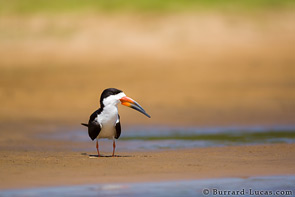

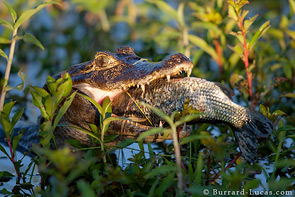

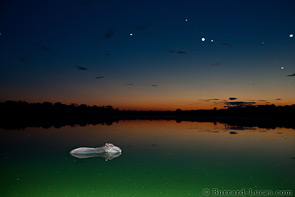

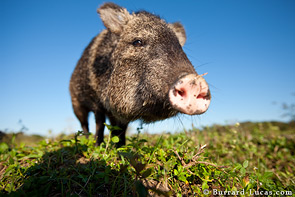
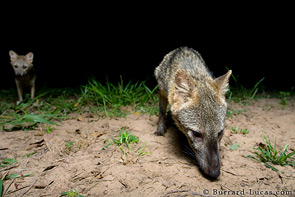


Beautiful photographs.
I loved the Hyacinth Macaw and the black skimmer. I’m sad I couldn’t experience the Panatanal the way you have, so I’m hoping for a revisit to Brasil myself.
Waiting for the rest of the posts from your trip.
Cheers!
woww.. great shots… nice work dudes…
like the Hyacinth Macaw capture and the anteater..
like to experience…
wonderful work guys…
keep it up….
cheers
Wonderful photos.Come to Colombia Eje cafetero Pereira, Armenia, Manizales.
Excellent as always
Nice shot,composition & theme.
Its my dream to get to Pantanal. Its great!
Great shots ! Enjoyed seeing your work. The hycinth macaws have two chicks in that nest by now !
Cheers.
Hi,
great photos and it echo’s my expereince of visiting the pantanl both this year and last. Where did you stay? I can recommend the Embiara lodge and the Jaguar ecological reserve. I’ve got a trip report on my blog in case you’re interested.
It’s lame that i’m Brazillian and not gone even once to Pantanal, such a beatiful place.